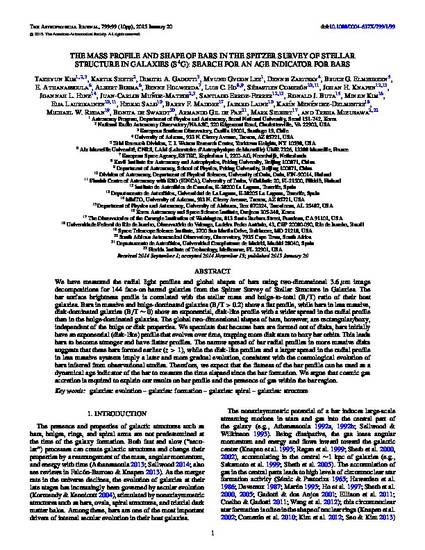
We have measured the radial light profiles and global shapes of bars using two-dimensional 3.6μm image decompositions for 144 face-on barred galaxies from the Spitzer Survey of Stellar Structure in Galaxies. The bar surface brightness profile is correlated with the stellar mass and bulge-to-total (B/T) ratio of their host galaxies. Bars in massive and bulge-dominated galaxies (B/T > 0.2) show a flat profile, while bars in less massive, disk-dominated galaxies (B/T ∼ 0) show an exponential, disk-like profile with a wider spread in the radial profile than in the bulge-dominated galaxies. The global two-dimensional shapes of bars, however, are rectangular/boxy, independent of the bulge or disk properties. We speculate that because bars are formed out of disks, bars initially have an exponential (disk-like) profile that evolves over time, trapping more disk stars to boxy bar orbits. This leads bars to become stronger and have flatter profiles. The narrow spread of bar radial profiles in more massive disks suggests that these bars formed earlier (z > 1), while the disk-like profiles and a larger spread in the radial profile in less massive systems imply a later and more gradual evolution, consistent with the cosmological evolution of bars inferred from observational studies. Therefore, we expect that the flatness of the bar profile can be used as a dynamical age indicator of the bar to measure the time elapsed since the bar formation. We argue that cosmic gas accretion is required to explain our results on bar profile and the presence of gas within the bar region.
Kim, Taehyun, et al. "The Mass Profile and Shape of Bars in the Spitzer Survey of Stellar Structure in Galaxies (S4G): Search for an Age Indicator for Bars." 2015. The Astrophysical Journal 799(1): 10 pp.

Copyright 2015. The American Astronomical Society. All rights reserved.
https://doi.org/10.1088/0004-637X/799/1/99